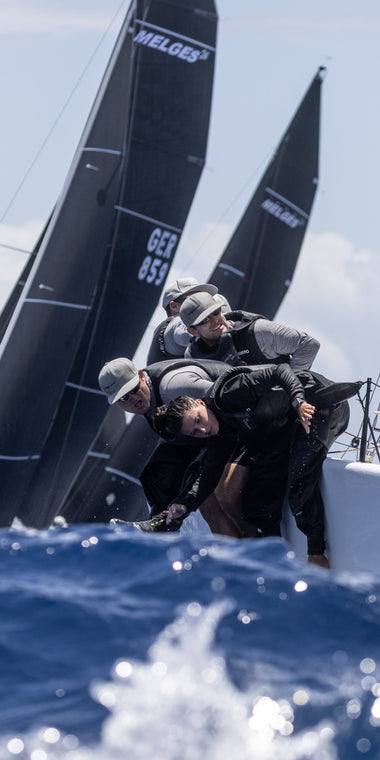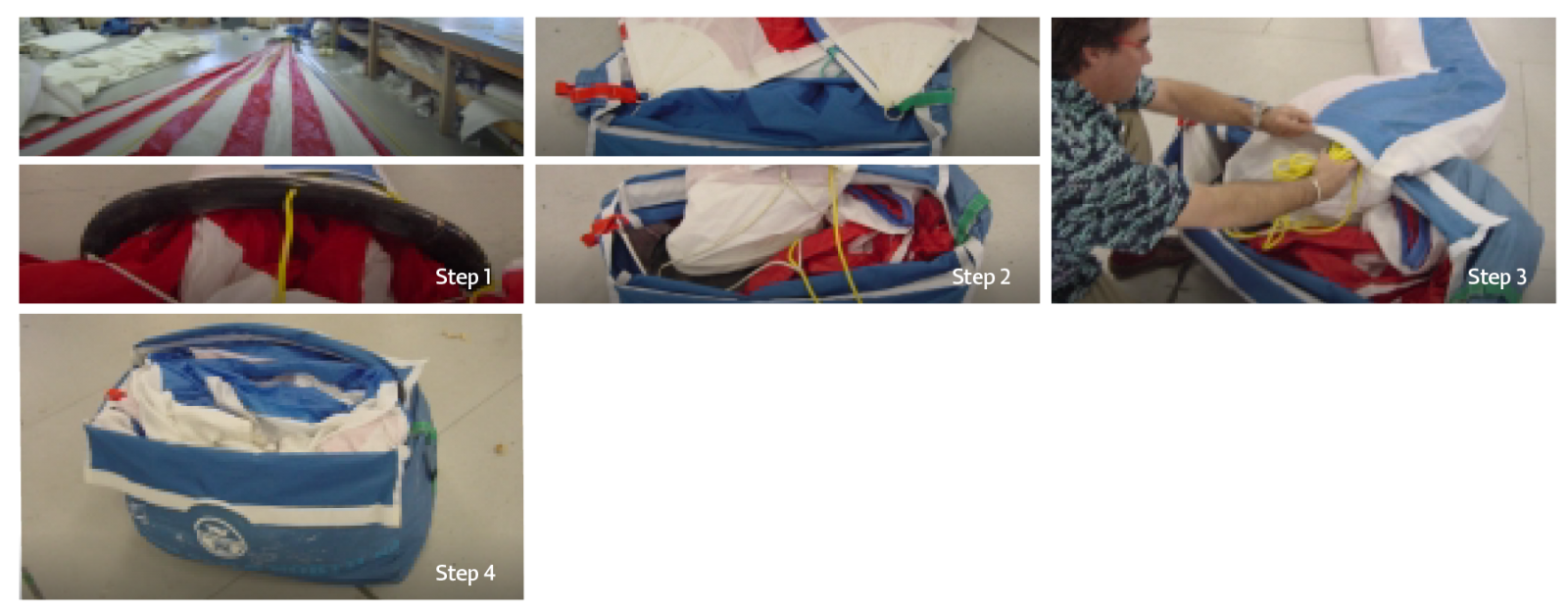GENNAKER LAUNCHING BAG INSTALLATION GUIDE
GENNAKER LAUNCHING BAG
Installation Guide

Most of the really memorable spinnaker mishaps can be avoided if the sail is equipped with a dousing sleeve. Inside the sleeve, the sail is protected from most snags. When the sleeve is hoisted there is no pressure on the sail, so the crew can take their time and make sure everything is sorted out before raising the sleeve. However, the sleeve and retrieval line add another layer of complexity and potential for tangles. That’s why, except on very large boats that are equipped with purpose-made spinnaker launching bins, we recommend storing your cruising spinnaker and sleeve in a racing “box turtle” bag or zipper “sausage” bag. For trouble-free launching and retrieval, follow the steps below.
Step 1
In a sail loft or on a clean dry lawn, tie the head of the sail to a tree or post. With a helper holding the tack, run the sleeve up and down to remove any twists.
Step 2
Pull the sleeve all the way down. If the sleeve fits the sail correctly, the cone will come within a foot of the clew, but will not go past the clew. Next, attach the clew and tack to opposite ends of the bag with the Velcro web straps. Stuff the loose foot fabric into the bag and place the cone in the center of the bag opening, on top of foot material, clew, and tack.
Step 3
Coil the retrieval line loosely and shove it up into the outer sleeve, so the line disappears above and outside the cone. This will keep the retrieval line from getting tangled and will prevent you from inadvertently rigging the tack line, halyard or sheets through the loop. (When you hoist the sleeve to the top of the mast, the retrieval line may fall to the deck on its own; if not, reach in and pull it out.)
Step 4
Flake the sleeve into the bag, forcing each flake deep into the corners. Pass the center Velcro webbing through the head ring and close the bag. Now the sail can be hooked up to the tack line, halyard, and sheets. You will hoist right out of the bag.
If the cone is allowed to run freely up the luff as the sail fills, it is possible for the cone to run fast enough that it creates a fair amount of friction. This could cause enough heat to melt the fabric over large areas of the sail. The friction of the retrieval line running through the palm of your hands can also cause enough friction to melt human skin. The skin repair is free (except in extreme cases), but the cost of replacing the melted spinnaker fabric can be pretty high. Before raising the cone, control deployment speed by wrapping the retrieval line around a deck fitting or winch.




























